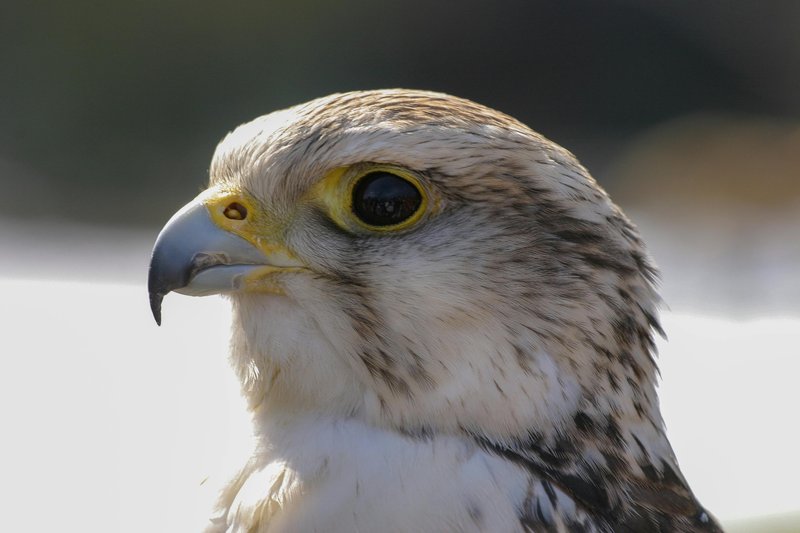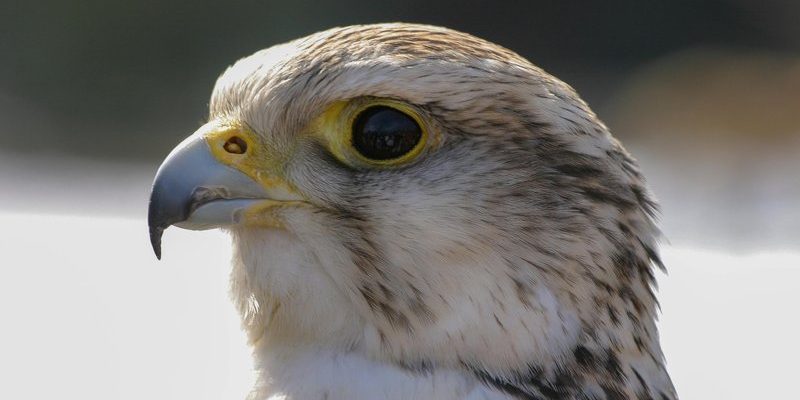
Historically, the gyrfalcon has not only been admired for its beauty but also revered for its skills as a hunter. From the windswept tundras of the Arctic to the folklore of indigenous peoples, this bird has become a prominent figure. Understanding how the gyrfalcon is represented in culture and folklore opens a window into the values and beliefs of different societies. So, let’s dive into some captivating stories and traditions surrounding this remarkable bird!
The Gyrfalcon in Norse Mythology
In Norse mythology, the gyrfalcon takes on a mythical essence. It’s often associated with Odin, the chief god, who is known for his wisdom and war prowess. You might be surprised to learn that the gyrfalcon symbolizes the idea of inspiration and insight in these tales. Odin himself was said to have had two ravens, Huginn and Muninn, that flew across the world to bring him knowledge. The gyrfalcon, with its unmatched hunting abilities and keen eyesight, complements this theme.
These birds were also linked to kingship and power. Gyrfalcons were often used during hunts by the Norse elite, signifying wealth and nobility. Imagine being a king, riding through the frost-covered forests with a gyrfalcon perched on your arm, ready to swoop down on unsuspecting prey. This image captures the very essence of status and mastery over nature.
The connection to Odin also reflects the broader theme of birds as messengers in various cultures. For instance, the gyrfalcon’s flight pattern can be seen as a metaphor for the quest for knowledge and the spiritual journey of both gods and humans.
The Gyrfalcon in Inuit Culture
The Inuit people of the Arctic have their own unique reverence for the gyrfalcon. To them, this bird holds significant cultural importance, often representing power, agility, and resilience against harsh environments. Let me explain: in a land where survival is an everyday challenge, the gyrfalcon’s hunting prowess becomes a source of admiration and respect.
Inuit traditions often depict the gyrfalcon as a symbol of thunder and strength. This makes sense, given the bird’s impressive speed and grace as it navigates the challenging Arctic skies. Folklore stories often recount how the gyrfalcon is a guardian of the land, watching over the people and ensuring that the balance of nature is maintained. Its keen eyesight and swift flight are seen as characteristics of a vigilant protector.
Moreover, there are stories where the gyrfalcon is believed to guide lost souls or help those in need. Imagine a hunter’s journey in the vast, icy expanse, with a gyrfalcon leading the way, symbolizing hope and direction. The bond between the Inuit and the gyrfalcon teaches a lesson about respect for nature and reliance on its creatures.
The Gyrfalcon as a Symbol of Freedom
Across various cultures, the gyrfalcon has come to symbolize freedom. Its ability to soar high above the earth paints a picture of liberation and the spirit of exploration. You might be wondering how this ties into folklore and culture. Well, in many stories, the gyrfalcon’s flight embodies the human desire to break free from constraints and reach for greater heights.
In literature, this bird often represents characters who are adventurous and unafraid to embrace new challenges. Think of classic tales where the protagonist yearns for a world beyond their borders, much like a gyrfalcon searching for open skies. This connection encourages a sense of longing for personal growth, pushing individuals to rise above their limitations.
Moreover, the gyrfalcon often appears in art and literature as a motif for courage. The sight of a gyrfalcon gliding against the backdrop of a bright sky serves as an inspiring reminder of the possibilities life has to offer. It’s a beautiful metaphor for anyone who has ever felt trapped in their circumstances—there’s always the potential to break free and soar.
The Gyrfalcon in Heraldry and Emblems
When we look at the world of heraldry, the gyrfalcon stands tall as a symbol of nobility and valor. Many coats of arms and banners feature this bird, showcasing its connection to royalty and power. You might see it depicted with outstretched wings or clutching a piece of prey, emphasizing its status as a fierce hunter.
In European heraldry, the gyrfalcon often signifies bravery in battle. Knights and noble families would adopt the gyrfalcon as part of their lineage, linking their honor and courage to the characteristics of this superb bird. It wasn’t just a decoration; it was a statement of identity and heritage. Imagine a knight donning armor emblazoned with the gyrfalcon, ready to defend their kingdom with the same ferocity that the bird displays in the wild.
These emblems serve as a reminder of the strong connection between humans and animals in the past. By adopting the gyrfalcon as a symbol, noble families honored the qualities they aspired to possess: strength, freedom, and the spirit of the hunt.
Modern Cultural References of the Gyrfalcon
Even today, the gyrfalcon continues to inspire modern culture, showing up in various forms of art, literature, and even popular media. Its striking appearance and fascinating qualities make it a favorite among wildlife photographers and artists. The bird’s unique blend of grace and power often resonates with contemporary audiences, reminding us of the beauty of the natural world.
In literature, the gyrfalcon is sometimes featured in stories about adventure and exploration. It serves as a symbol of ambition and the journey toward individuality. You might find references to this majestic bird in novels that explore themes of self-discovery and the quest for freedom. Authors use the gyrfalcon as an analogy for characters who strive to rise above their circumstances and achieve their dreams.
Additionally, the gyrfalcon’s presence in educational materials about wildlife emphasizes its importance in biodiversity and ecology. It stands as a reminder of the need to protect the habitats of such magnificent creatures. So the next time you hear about the gyrfalcon, think of the broader messages about nature and freedom that it continues to convey.
The Role of the Gyrfalcon in Conservation Efforts
As we continue to celebrate the gyrfalcon in culture and folklore, it’s essential to recognize its role in modern conservation efforts. With habitat loss and climate change posing significant threats to wildlife, organizations are working diligently to protect this majestic bird. You may be surprised to learn that the gyrfalcon is a sentinel species, meaning its health reflects the health of its environment.
These conservation efforts highlight the connections between folklore and real-world action. By appreciating the gyrfalcon’s role in various cultures, we also promote the importance of preserving its habitat for future generations. It’s a beautiful full-circle moment—one where the stories we cherish can lead to actionable steps for protection and preservation.
Through documentaries, wildlife programs, and educational campaigns, people are becoming more aware of the gyrfalcon’s plight. Inspired by its representation in culture, many individuals are motivated to take part in conservation initiatives. Whether it’s volunteering or donating to wildlife organizations, awareness is growing, and so is the hope for the gyrfalcon’s future.
The gyrfalcon is more than just a bird; it’s a powerful symbol that has inspired countless tales and traditions. From Norse mythology to Inuit culture, this remarkable bird has woven its way through the fabric of human experience, representing ideals of strength, freedom, and guardianship. As we explore its significance in various cultures, we see how deeply intertwined our lives are with the natural world.
Whether perched on a noble’s crest or soaring through the Arctic sky, the gyrfalcon reminds us of our aspirations and our responsibilities. As we acknowledge its place in folklore, let’s also commit to protecting its future. After all, the stories we tell and the actions we take today can shape the conversations of tomorrow.

